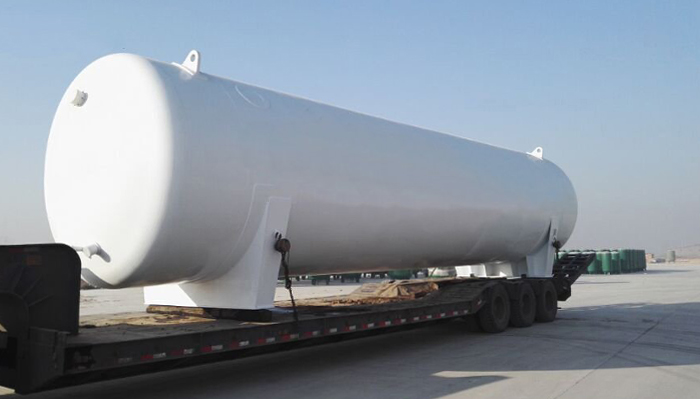Product Category
Classification of cryogenic storage tanks
Date: Jan 06, 2020

Cryogenic storage tanks can be divided into two categories according to the type of insulation: one is a non-vacuum-insulated cryogenic container, which is mainly a large storage and transportation container for liquid nitrogen, liquid oxygen, and liquefied natural gas; the other is a vacuum-insulated cryogenic container. It is mainly small and medium storage and transportation containers for liquid nitrogen, liquid oxygen and liquid helium. Vacuum insulation cryogenic containers are divided into: ① high vacuum insulation cryogenic containers. This type of container is small in size, suitable for storage and transportation of liquid oxygen, liquid nitrogen, and liquid argon, and is often used for short-term experiments. ② Vacuum powder insulated cryogenic vessels. This type of container is suitable for the storage and transportation of large quantities of liquid oxygen, liquid nitrogen and liquid hydrogen. ③ High-vacuum multi-layer adiabatic cryogenic storage tank. This type of container is mainly used for long-term storage of liquid nitrogen. The vacuum insulation container adopts a double-walled structure, and a vacuum insulation sandwich is formed between the two walls, which is filled with a thermal insulation material, or a protective screen is installed, and a vacuum is evacuated. The type of insulation used in the design of a low-temperature container depends on the comprehensive factors such as cost, operability, quality, and stiffness.
Cryogenic containers are classified according to structure and can be divided into the following types:
(1) Gas cylinder. The gas cylinder in the broad sense is a disposable or refillable mobile pressure vessel that includes different pressures, different structural forms and different materials for storing and transporting permanent gas, liquefied gas and dissolved gas.
(2) Storage tank. Storage tanks are generally divided into vertical, horizontal, small, medium and large. Vertical storage tanks are generally made stationary because of their compact structure, small footprint, and easy operation and maintenance.  (3) The main forms of storage tanks such as tanker, bicycle, semi-trailer, full-trailer, and rail tanker. Small-volume tankers are usually installed in truck bodies, and large-volume tankers are mounted on semi-trailers or full-trailers.
(3) The main forms of storage tanks such as tanker, bicycle, semi-trailer, full-trailer, and rail tanker. Small-volume tankers are usually installed in truck bodies, and large-volume tankers are mounted on semi-trailers or full-trailers.
(4) Tank boxes. Low temperature storage tank containers have the characteristics of low daily evaporation rate, good thermal insulation effect, convenient and flexible transportation methods, high transportation efficiency, long service life, and simple maintenance.
(5) Tank ships. Cryogenic liquid carriers are generally used to transport LNG. In large LNG carriers, two competitive large tank designs are the spherical tank type and the thin film type.
(6) Shipping containers, especially those used in spacecraft, are required to be compact, lightweight, and able to withstand acceleration, vibration, and impact.
Cryogenic containers are classified according to structure and can be divided into the following types:
(1) Gas cylinder. The gas cylinder in the broad sense is a disposable or refillable mobile pressure vessel that includes different pressures, different structural forms and different materials for storing and transporting permanent gas, liquefied gas and dissolved gas.
(2) Storage tank. Storage tanks are generally divided into vertical, horizontal, small, medium and large. Vertical storage tanks are generally made stationary because of their compact structure, small footprint, and easy operation and maintenance.

(4) Tank boxes. Low temperature storage tank containers have the characteristics of low daily evaporation rate, good thermal insulation effect, convenient and flexible transportation methods, high transportation efficiency, long service life, and simple maintenance.
(5) Tank ships. Cryogenic liquid carriers are generally used to transport LNG. In large LNG carriers, two competitive large tank designs are the spherical tank type and the thin film type.
(6) Shipping containers, especially those used in spacecraft, are required to be compact, lightweight, and able to withstand acceleration, vibration, and impact.
Next article:
Send Your Inquiry
We not only provide a good product, but also provide high quality service. If you are interested in our products,
you can contact us in the following ways.
you can contact us in the following ways.















































































































